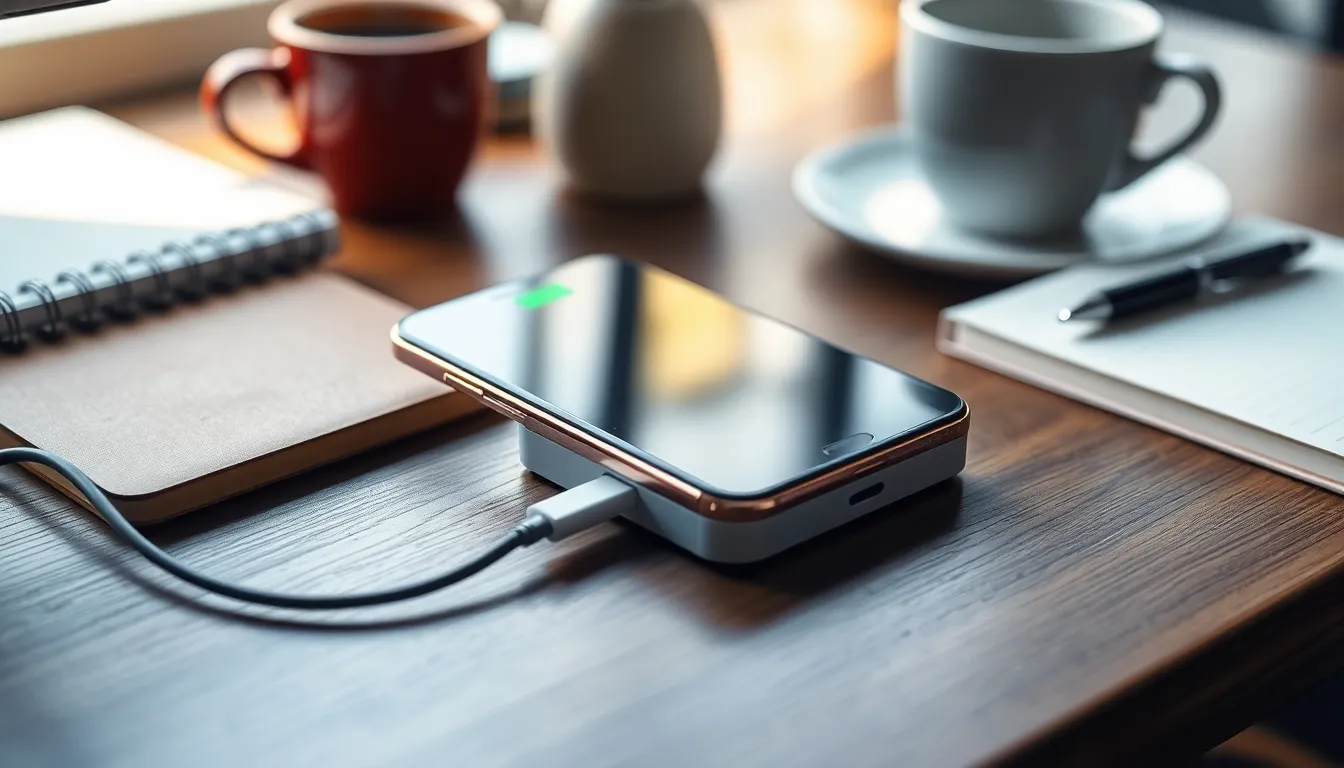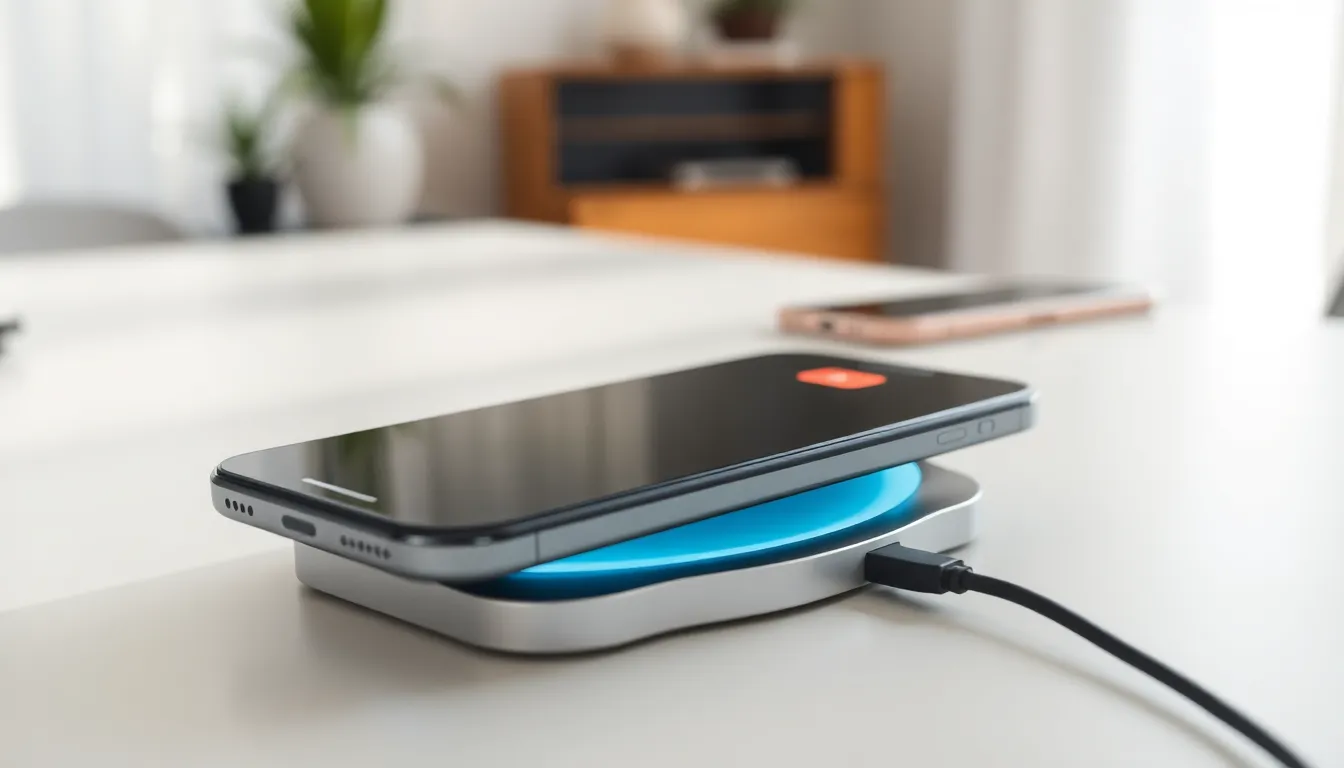Table of Contents
ToggleEvery iPhone user has experienced that heart-stopping moment when the battery icon turns red. Panic sets in as they wonder if they can make it through the day without a charger. But fear not! Understanding when to charge an iPhone can save users from the dreaded low-battery drama.
Charging isn’t just about plugging it in whenever it dips below 20%. There’s a strategy to keep that battery healthy and happy. It’s like a delicate dance between usage and charging habits, ensuring your iPhone lasts longer while keeping you connected to the world. So let’s dive into the art of charging your iPhone at the right times and discover how to keep your device powered up without the anxiety of a dying battery.
Understanding iPhone Battery Life
iPhone battery life plays a crucial role in user experience. Many factors influence how long an iPhone lasts between charges.
Factors Affecting Battery Performance
Environmental conditions impact battery performance significantly. High temperatures can cause the battery to drain faster, while cold temperatures may lead to unexpected shutdowns. Usage patterns also matter; extensive use of GPS, streaming, and gaming depletes battery life quickly. Notifications from apps that run in the background can drain the charge as well. Screen brightness settings contribute to consumption; higher brightness settings reduce battery life more rapidly. Additionally, software updates can optimize battery efficiency or, in some cases, introduce unforeseen issues.
Typical Battery Lifespan
A typical iPhone battery lasts about two to three years under normal use. Lithium-ion batteries, which power iPhones, usually maintain up to 80% of their original capacity after 500 full charge cycles. Daily charging habits can affect longevity. Users who frequently charge their phones overnight might experience a decrease in overall lifespan compared to those who employ more strategic charging. Regular updates to iOS can enhance battery management, prolonging overall performance and endurance. Understanding these factors enables users to maximize their iPhone’s battery potential effectively.
Optimal Charging Practices

Charging an iPhone properly promotes battery health and efficiency. Understanding the right times and methods to charge helps extend the lifespan of the battery.
When Should You Charge iPhone?
Charge an iPhone when the battery level drops to around 20%. Battery performance improves with frequent, partial charges instead of deep discharges. Maintaining a level between 20% and 80% enhances battery longevity. Continuous charging past 100% can cause stress on the battery. If users notice their device getting warm during charging, it’s advisable to unplug it briefly to cool down.
Best Charging Techniques
Utilize a high-quality charger that delivers sufficient power. An Apple-certified charger or cable maintains optimal charging safety. Avoid charging overnight, as this can diminish battery lifespan over time. Instead, charge the device during intervals, such as short breaks throughout the day. Consider using Low Power Mode to conserve energy while ensuring essential functions remain active. Regularly updating the iOS can also improve charging efficiencies and battery management.
Common Myths About iPhone Charging
IPhone users often hold various misconceptions about charging practices. Understanding these myths can greatly improve battery health and user experience.
Debunking Charging Misconceptions
Charging an iPhone overnight is a prevalent belief. In reality, modern iPhones employ smart charging technology to prevent overcharging. Plugging in a device at 1% doesn’t damage the battery either. Instead, consistent charging habits focus on maintaining a charge between 20% and 80%. Many users think excessive heat from charging is harmless. High temperatures can actually accelerate battery degradation, so it’s advisable to unplug during extended use or avoid charging in direct sunlight. Regular updates optimize charging efficiency and battery management, further dispelling common fears.
Myth vs. Reality
People often believe that using third-party chargers is just as effective as certified ones. However, this isn’t true; non-certified chargers can harm battery health over time. Users might think that fully draining a battery before charging is ideal. The opposite holds true, as frequent deep discharges can negatively impact lithium-ion batteries. Some individuals think constant charging can extend battery lifespan. In fact, maintaining a moderate charge enhances long-term performance. Recognizing these discrepancies fosters better practices for maximizing iPhone battery life.
Signs Your iPhone Needs Charging
Recognizing when it’s time to charge an iPhone helps maintain battery health and ensures connectivity. Several signs indicate a low battery status.
Low Battery Indicators
An iPhone displays a low battery warning at 20%, often triggering anxiety. Colors change to red, signaling an immediate need to charge. The device may also dim the screen brightness to extend battery life. Users might notice apps closing unexpectedly, indicating insufficient power. These indicators provide clear signals, so it’s essential to respond promptly to maintain functionality.
Battery Health Monitoring
Keeping an eye on battery health is crucial for performance. Users can check battery status under Settings > Battery > Battery Health. This section details maximum capacity and peak performance capability. A capacity decreasing to 80% or below often suggests aging or wear. Regular monitoring ensures any issues are addressed quickly, helping extend battery longevity. Making adjustments based on these insights fosters a healthier charging routine.
Understanding when to charge an iPhone is essential for maintaining its battery health and longevity. By adopting strategic charging habits and being mindful of usage patterns, users can significantly enhance their device’s performance. Recognizing the signs that indicate low battery and monitoring battery health through the Settings menu are crucial steps in this process.
By following best practices like charging between 20% and 80% and using certified chargers, users can optimize their iPhone’s battery life. Staying informed about the latest iOS updates also plays a vital role in maximizing battery efficiency. With these insights, users can enjoy a reliable and efficient iPhone experience for years to come.




